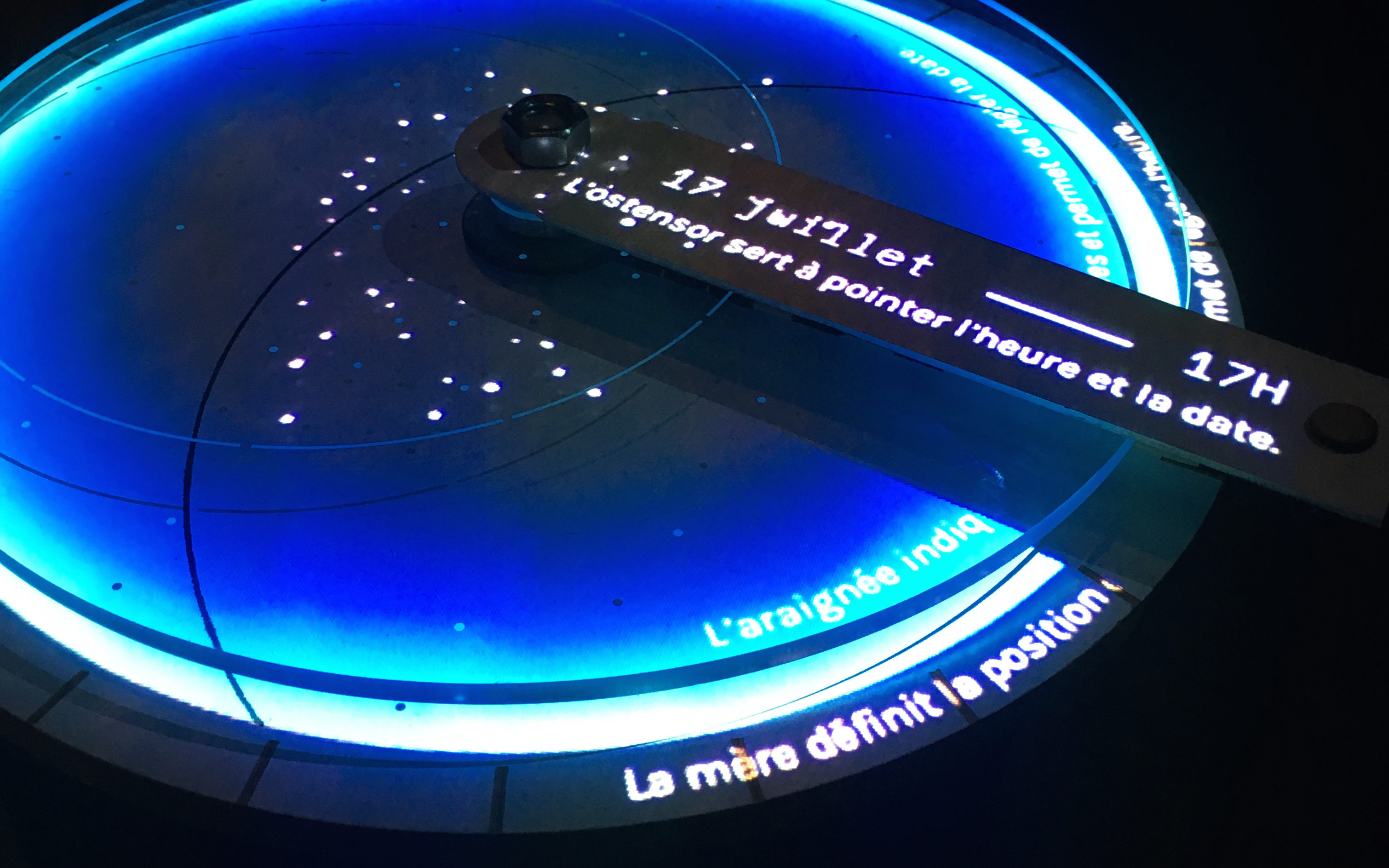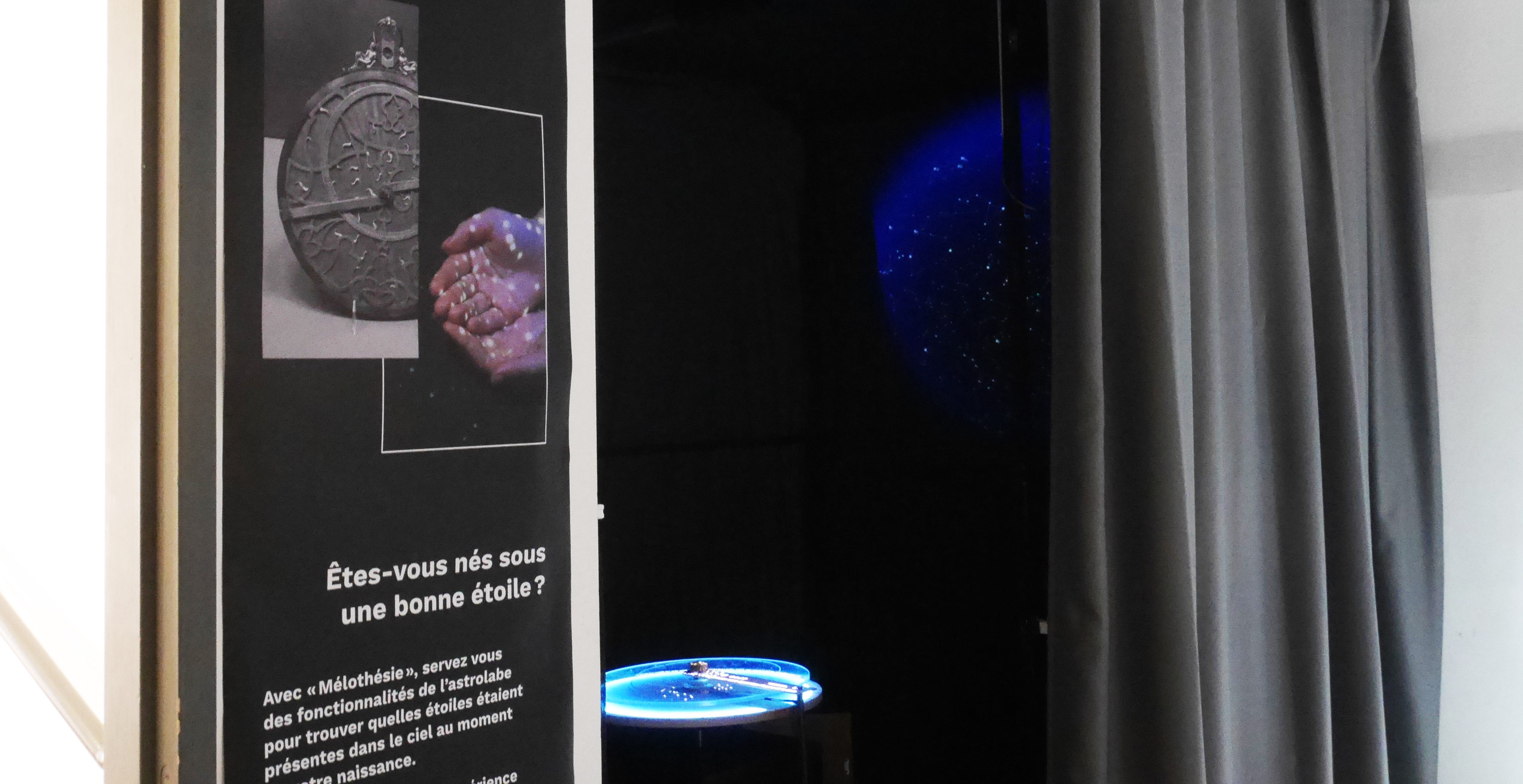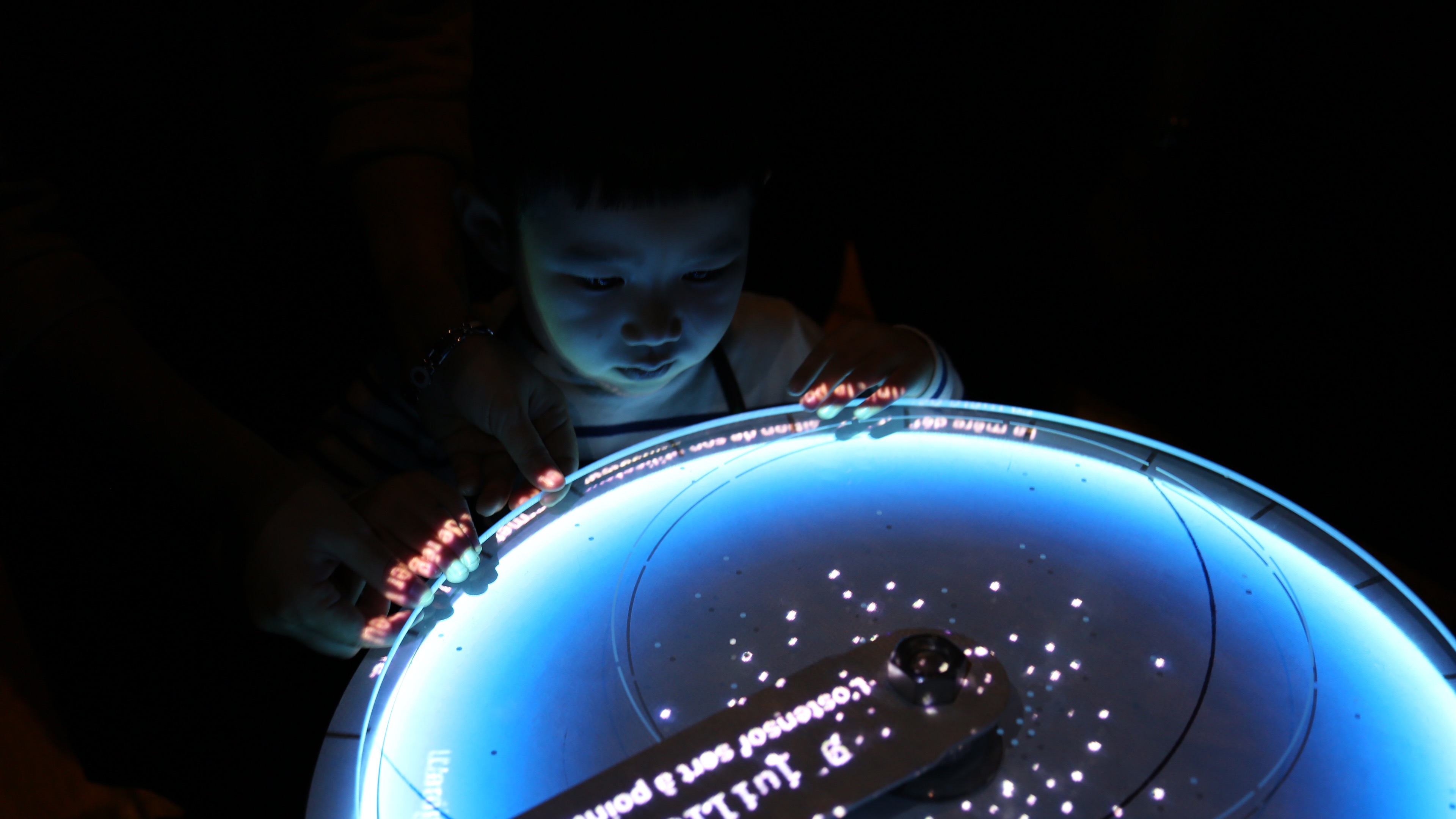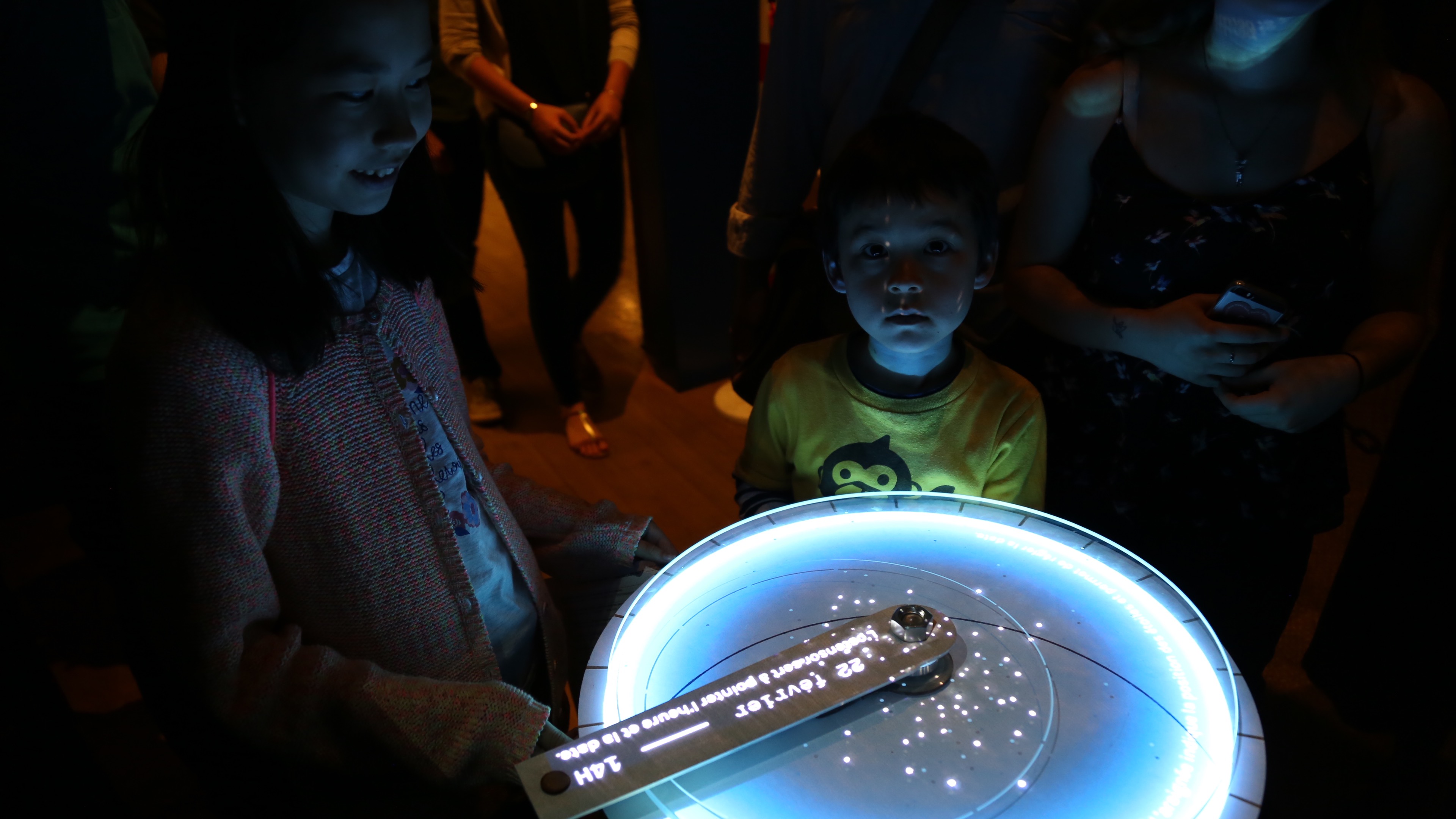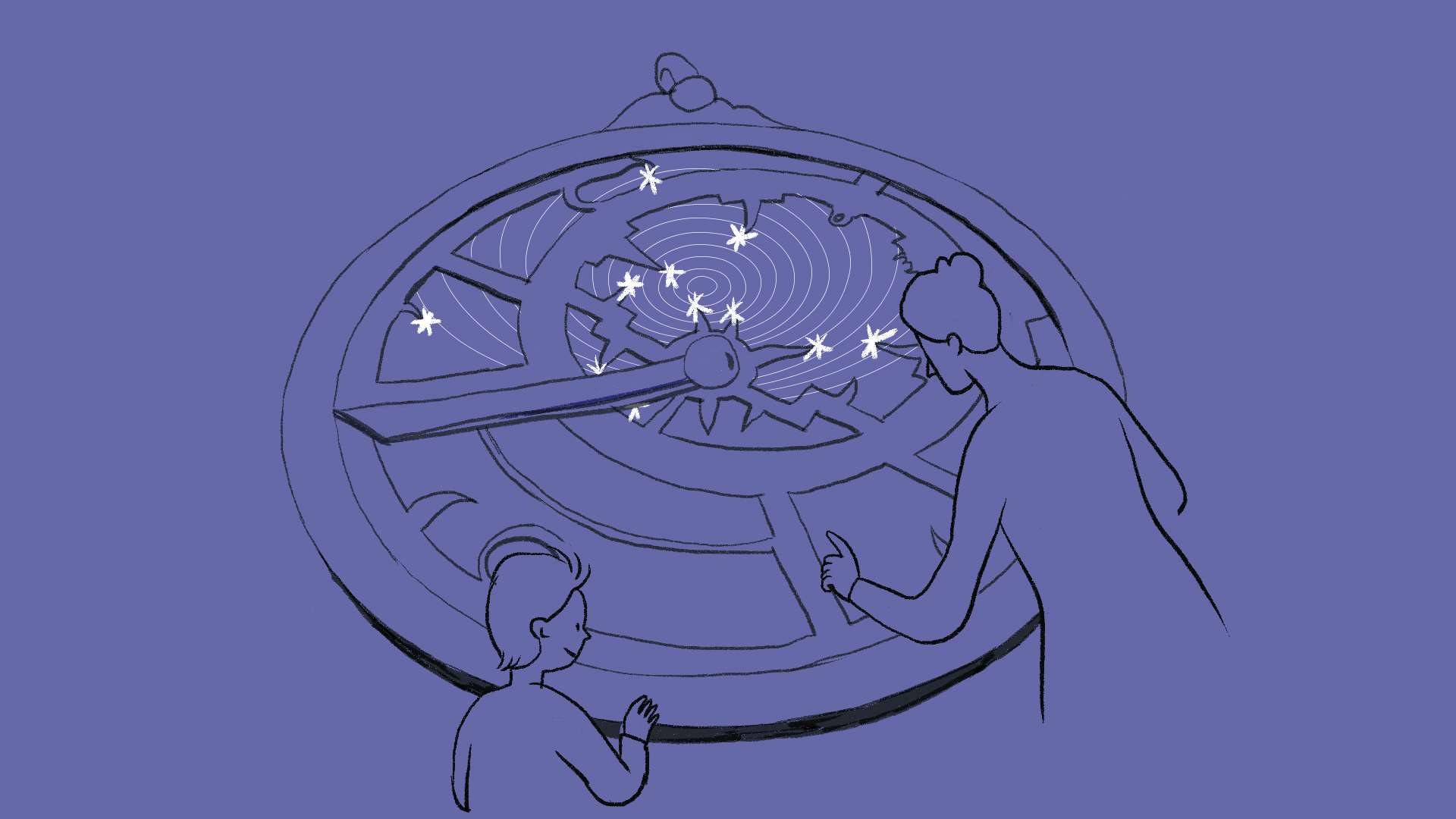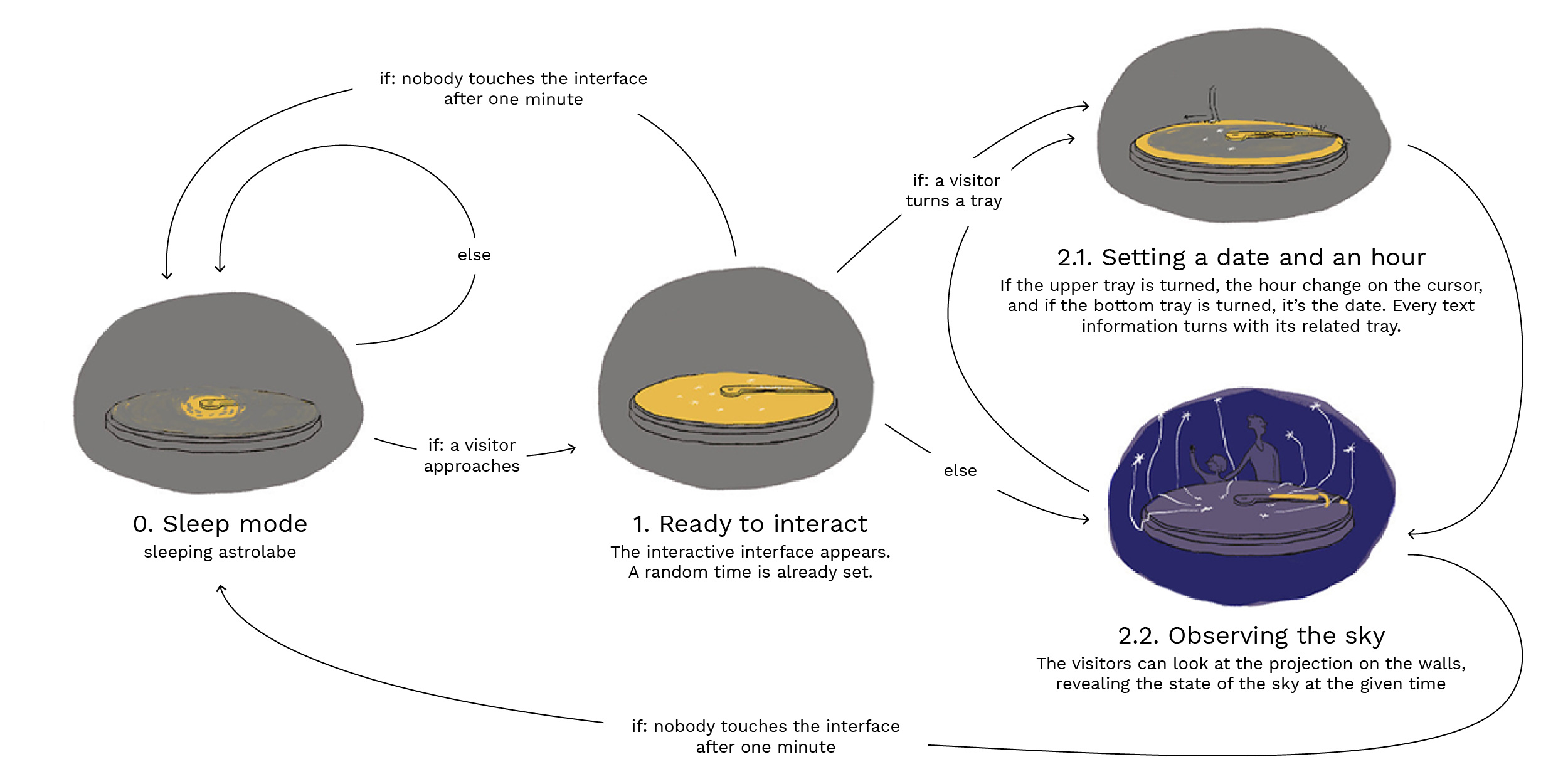Mélothésie
Mélothésie
CLIENT
Arts et Métiers Museum (Paris)
ROLE
Design concept, UX design, product design, scenography, development, hardware management
TECHNOLOGY & TOOLS
Arduino, Processing, Spacebrew with node.js, MadMapper, Illustrator, After Effects
OTHER CONTRIBUTORS
DESIGN PROBLEM
« Do not touch ». Our interactions with exhibited objects in museums are monitored or even forbidden, due to obvious conservation precautions. However, some objects have an interaction history, they have been alive in-between human’s hands, especially for the objects exhibited in the Musée des Arts et Métiers of Paris. It presents many technical objects from ancient ages which don’t remind of anything to visitors anymore, and the only thing you can read about them is « Name, Date ». The more you walk through this museum, the less you feel connected to these collections that look completely strange to you. That’s why, Tallulah Frappier, Coralie Retureau and myself, as interaction and gesture designers, we aimed to re-invent this link between the visitor and the exhibition thanks to digital technologies.
OUR PROJECT
The Mélothésie project results from our partnership with the Arts et Métiers Museum of Paris. We offered them a new way to share their knowledge to the visitors, creating an interactive and immersive installation dedicated to one of their objects: the astrolabe. It's a sophisticated scientific instrument whose functioning, based on stars’ position, offers more than a hundred different uses. In order to make the visitors understand how the astrolabe used to work, we focused on one of these uses: how to know the stars position in the sky thanks to the date and the hour. We’ve designed an augmented and enlarged artefact, animated by a mapped video projection, that explains the action of each part of this curious object so it’s understandable to anyone. It is set up in a small and intimate space with projections on its walls, in order to immerse the visitor. When he turns the trays, he can set a precise date and a precise hour. And when he looks up in front of him, he sees how the sky looks like at this precise moment in the city of Paris. We built a storytelling around these interactions: "set your date of birth to discover under which lucky star you’re born".
A STUDY BASED ON GESTURES
In order to start our project, we observed our visitor’s gestures: a visitor walking around the museum, a visitor interacting with someone else about the exhibition, a visitor holding a regular astrolabe in his hand for the first time… This way, we imagined an installation that would start from these observations, trying to adapt itself among the existing gestures, but that would lead the visitor to a good seizing, a good use of this curious astrolabe. Our takeaways were that groups of visitors in this museum are interacting a lot in order to share their comprehension of the objects, and we liked this collaborative discovery. Also we realized that the users tend to hold the astrolabe thanks to the ring on its top, so they would bring it at eye level, in order to look through it, like a compass. This way to hold the astrolabe represents only a part of its many uses. So in order to surprise the visitor and to suggest him other ways to manipulate the astrolabe, we decided to chose a use that requires to look at the astrolabe from the top, horizontally.
Illustration by Tallulah Frappier
ONE USER, MANY SPECTATORS: A SHARED EXPERIENCE
The Arts et Métiers Museum of Paris is a renowned institution and has a family audience. Its galleries sees many groups composed of people from different ages walking through every day. This gave us a shared ambition: we wanted to create a privileged link between a unique visitor and the astrolabe, as an explorer and its treasure, but at the same time, as mentioned above, we wanted to preserve the interactions that occurs among a group of visitors, sharing their impressions from their different point of view, in order to get to the best understanding. So we wanted to both provide a personalized experience for a unique user while many more could enjoy it. Indeed, we also needed to take into account the fact that because of the many visitors, not everybody would have the time to experience our installation, so we needed it as pleasant in an interactive as in a contemplative way. That’s why we imagined a circular interface, in the shape of a table, which interface is optimized for a particular point of view but it’s still understandable for people standing around. The table’s height has been optimized to welcome children as well as adults. It is set up in an intimate space, yet big enough to welcome a small group a visitor.
Illustration by Tallulah Frappier
THE VISITOR AS AN EXPLORER
Because this object is part of History and because without the visitor’s manipulation, this object would stay still and slowly fall into oblivion, we liked the idea of putting the visitor into an explorer’s shoes. In order to do so, we imagined an introduction phase between the visitor and the artefact: when no one is around, the installation is in a sleep mode, displaying a regular ancient astrolabe on its top, waiting for someone to awake it. And when a visitor comes near by it, the image of the astrolabe gets animated and reveals our interactive interface. This way, we make him understand that because he’s coming here, giving interest and giving the intention to interact, he has the power to awake this object that was once stuck behind a showcase and this way, he perpetuates a knowledge.
Illustration by Tallulah Frappier
AN INTERFACE GUIDED BY STARS
Mélothésie is the name of a science based on the fact that stars can influence our body. We’ve chosen this name because we’ve centered our installation around stars’ behavior as a guide for visitors’ gestures. Indeed, the tangible artifact is made of two trays with the main stars engraved on its surface. Because the top tray is made of plexiglass, this different engravings are stacking. This motivates the user to actually turn the trays in order to look for a reading. Moreover, a cloud of stars is floating around on top of the interface before someone touches it. As soon as the user’s hands starts approaching the installation, the stars are immediately heading towards them, to notify the user that his gesture are triggering something and to encourage him.
Selected Works

The black hole creatorInstallation

Y.O.L.O. bikeSpeculative design
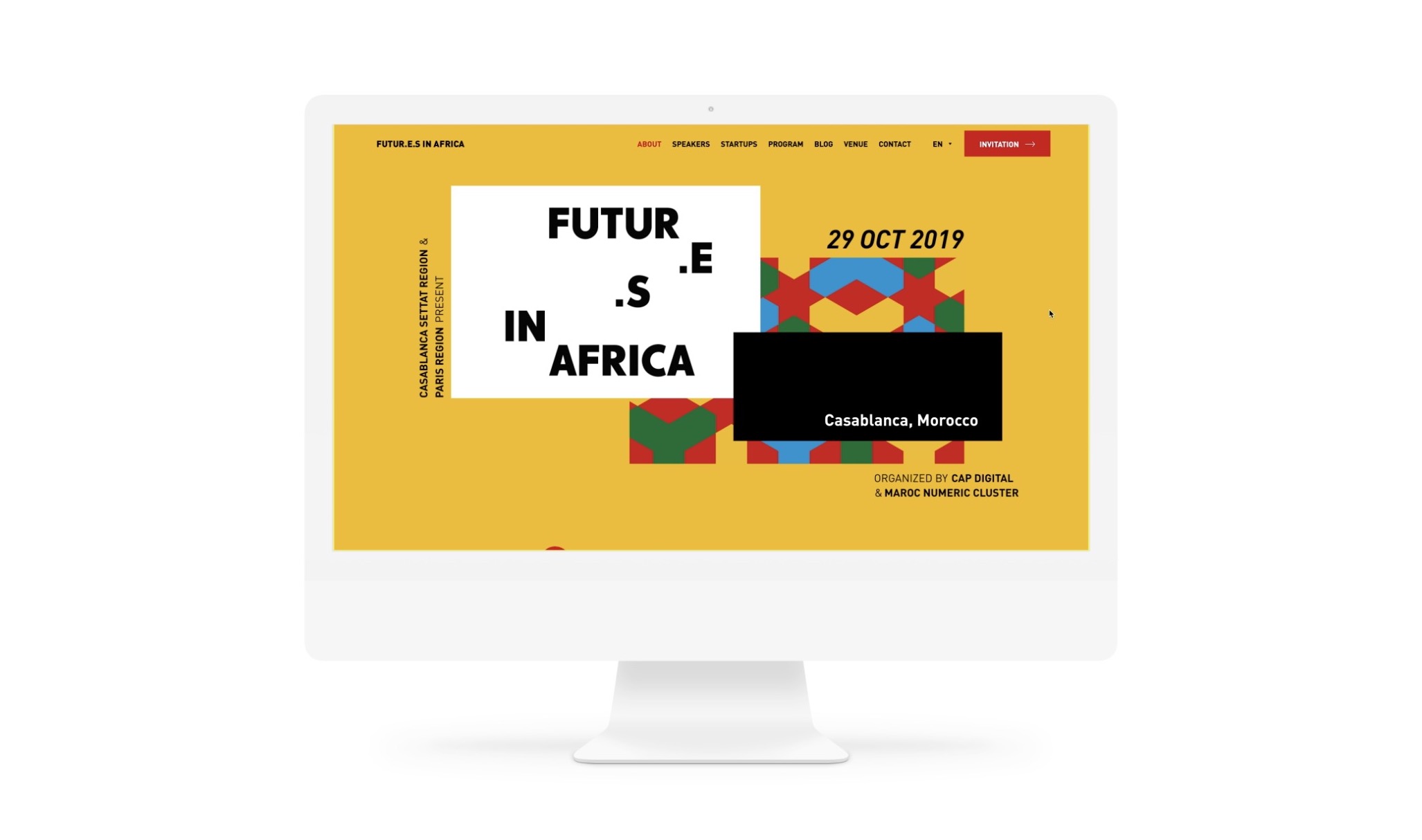
Futur.e.s in Africa 2019Website & Art direction
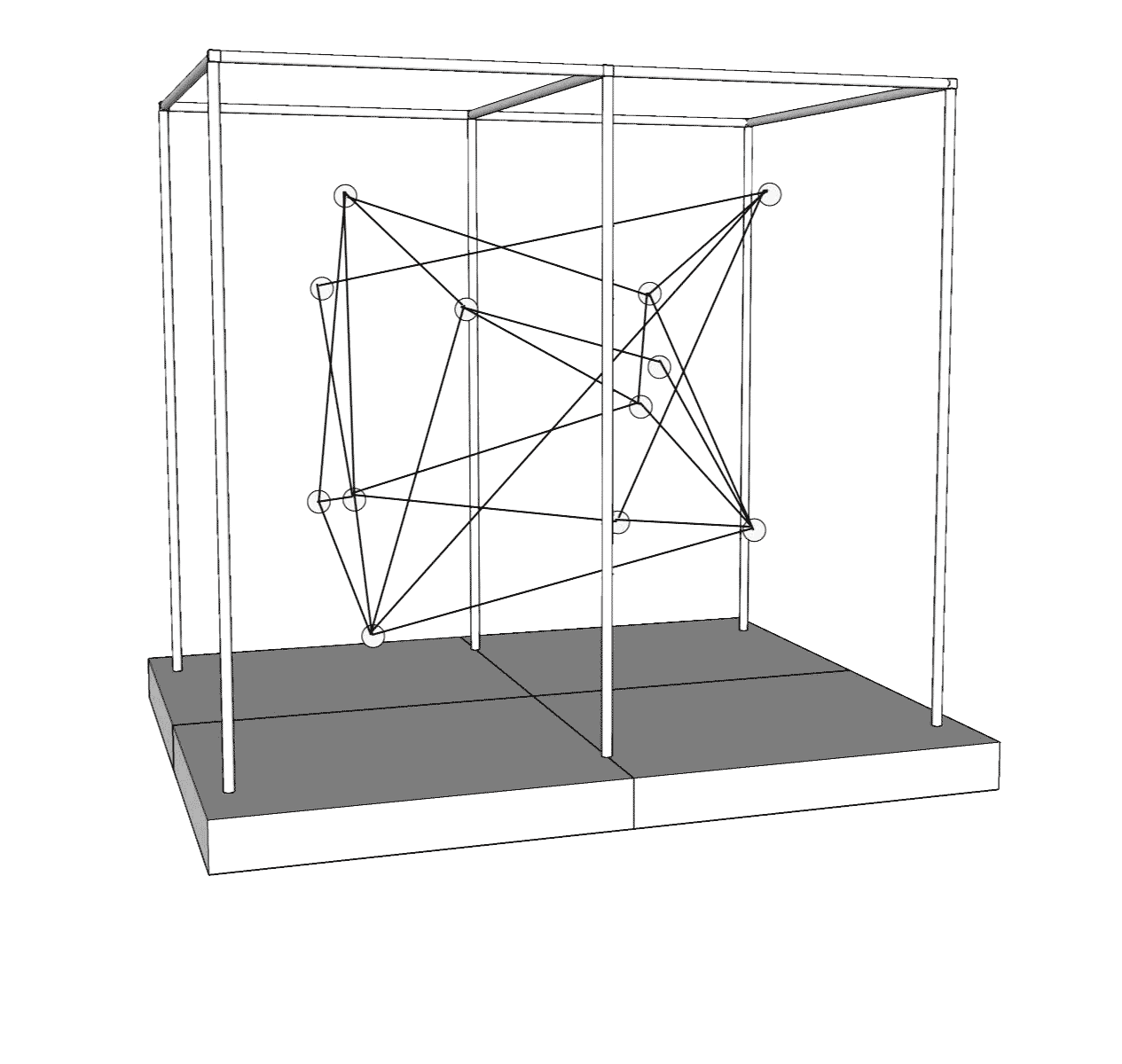
e.motionInstallation
